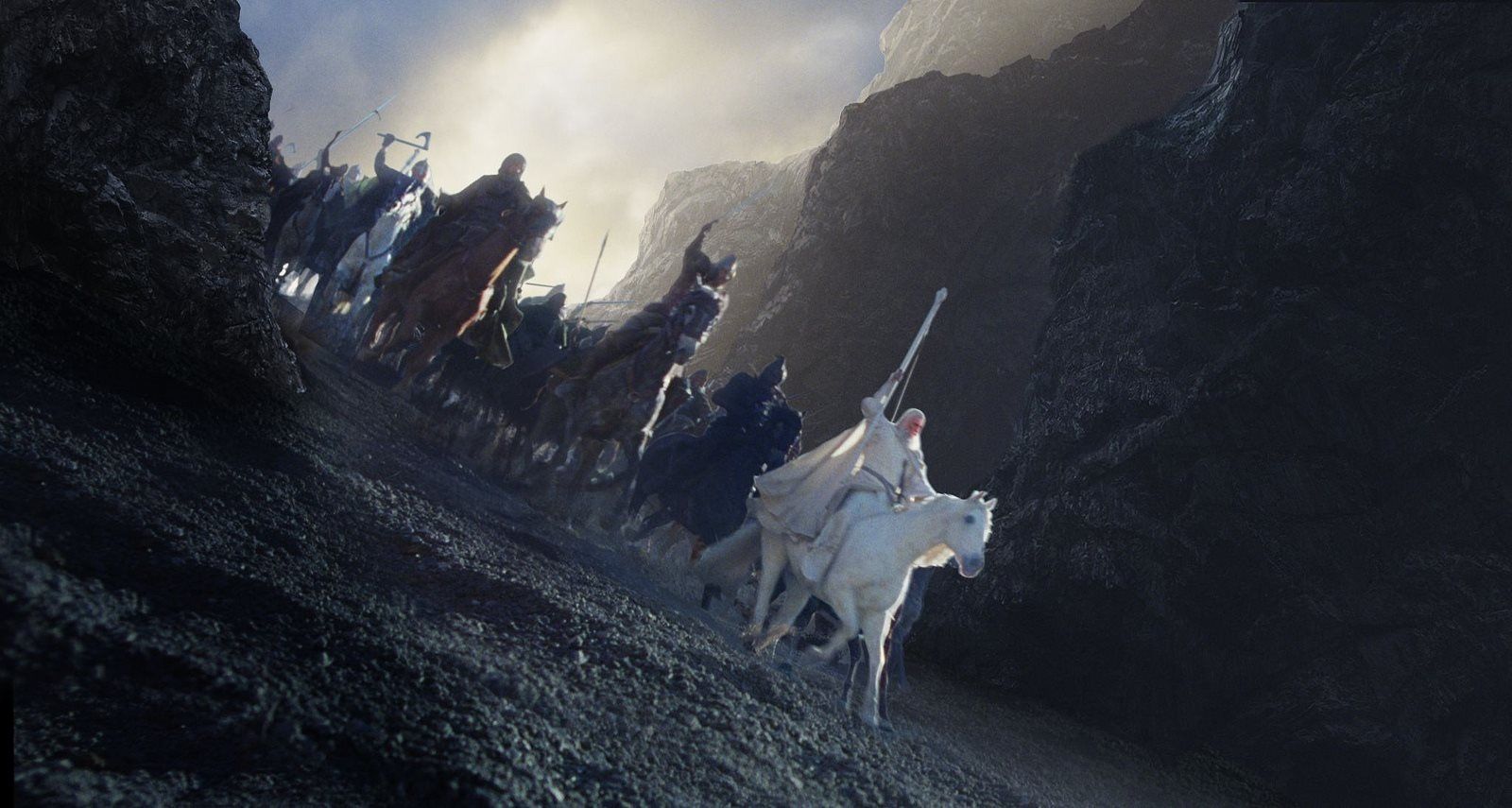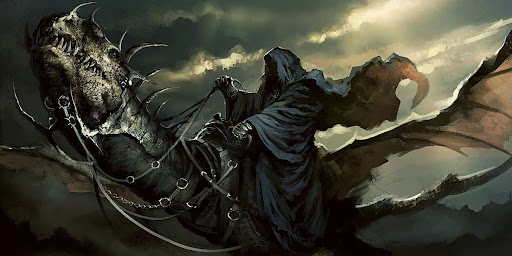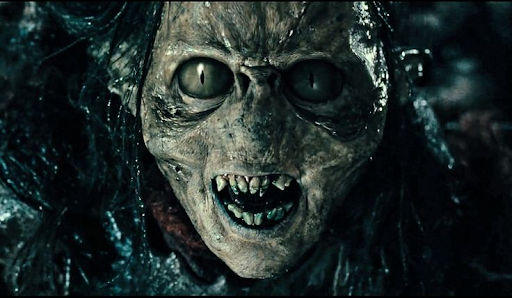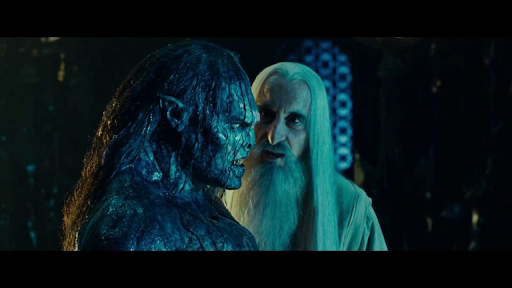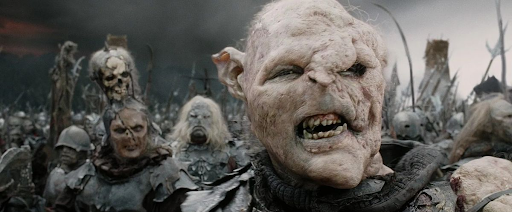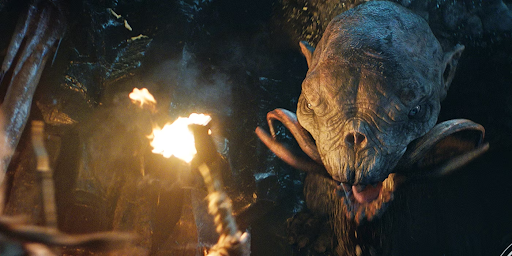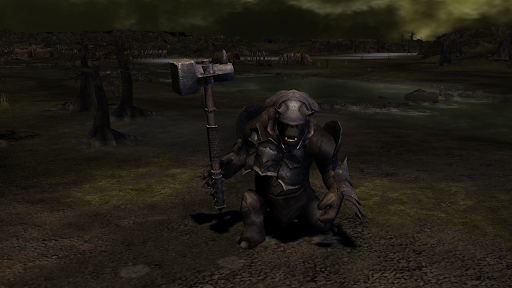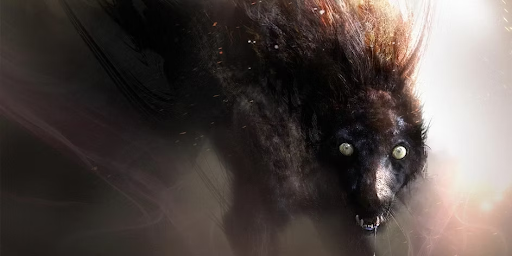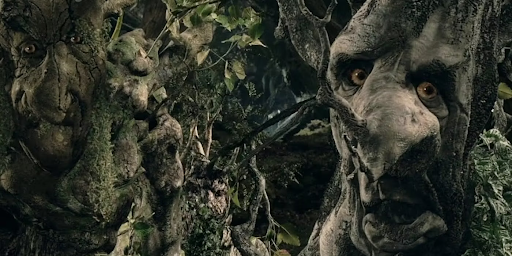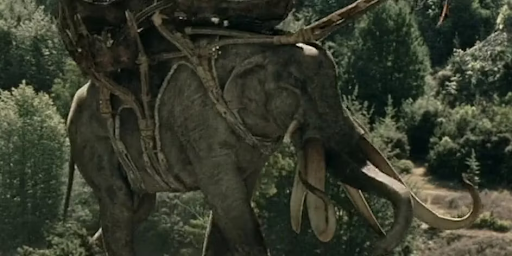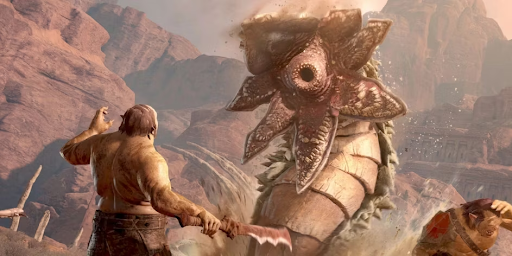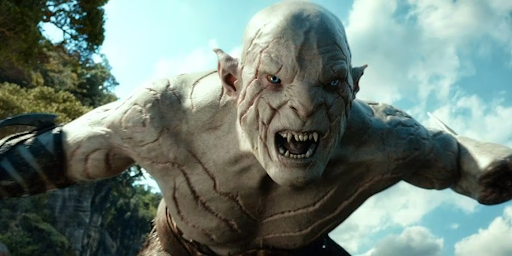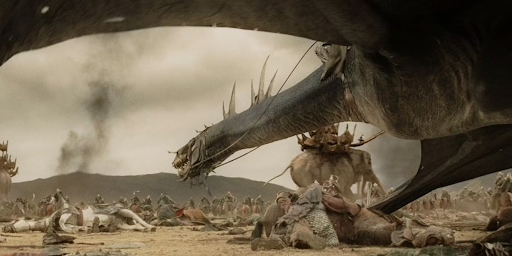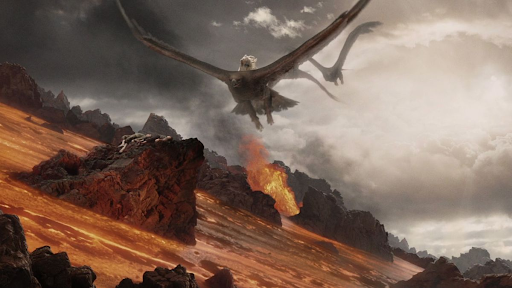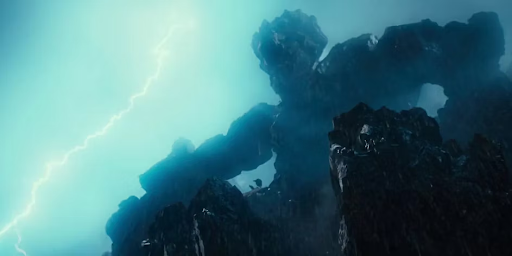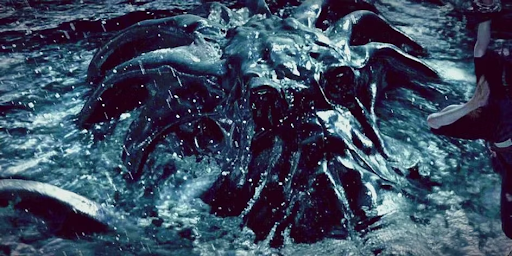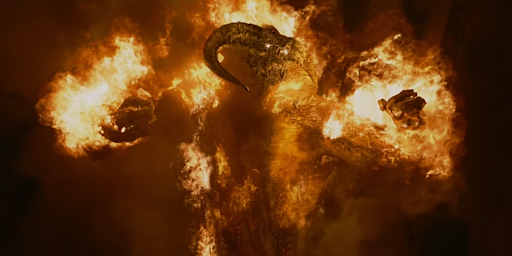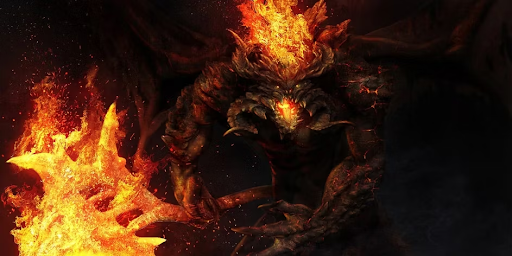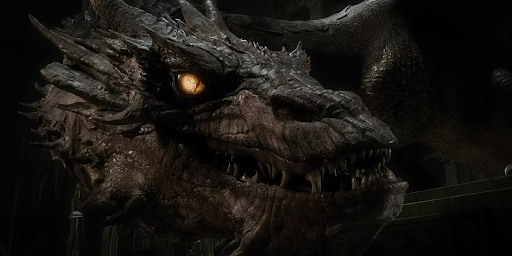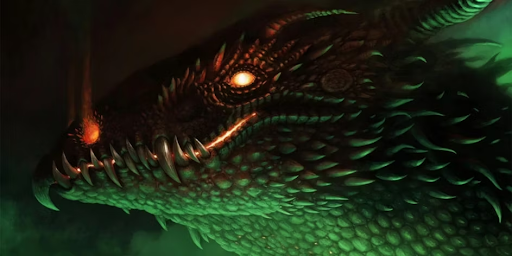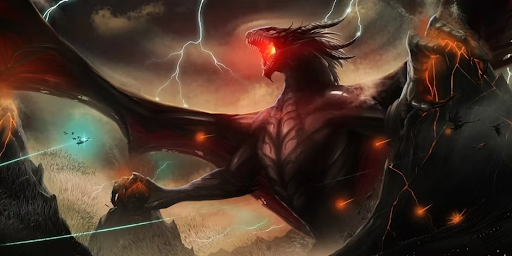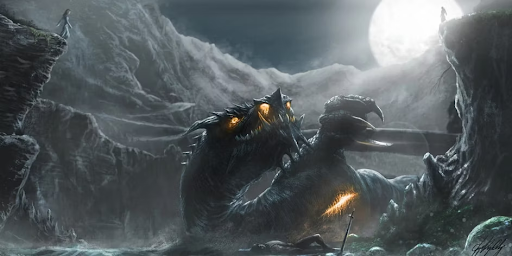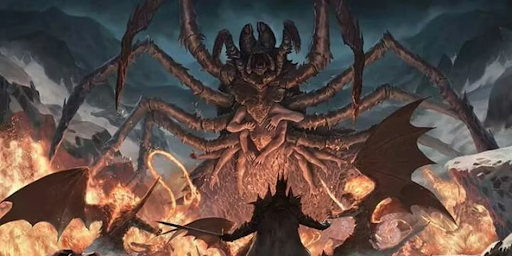24 Lord Of The Rings Creatures Ranked From Weakest To Most Powerful
J.R.R. Tolkien is renowned for creating an incredibly vast and intricate universe filled with captivating creatures in The Lord of the Rings. While most people are familiar with the movie trilogies and the upcoming Rings of Power Amazon Prime series, these adaptations merely scratch the surface. The history of this world spans over a century, with the prequel series only delving into a portion of that rich lore. The fantastical beasts encountered during the Third Age are awe-inspiring, but if fans venture back to the Second and First Ages, they will encounter even more formidable creatures capable of wreaking havoc on cities and terrifying entire armies.
Middle-earth is home to familiar animals from our world, but Tolkien also drew inspiration from folklore, introducing classic creatures like dragons and werewolves, as well as inventing his own. The term “creature” encompasses a wide range of beings, excluding the various human races such as Men, Elves, Dwarves, and Hobbits. Additionally, some creatures possess exceptional power within their species, resulting in a diverse mix of both collective and individual entries in The Lord of the Rings world.
In The Two Towers, Gandalf bestows upon Shadowfax the title of the “Lord of all horses,” and this is not merely the wizard expressing his admiration for his favorite steed. Shadowfax is a direct descendant of Felaróf, the greatest horse to ever grace the lands of Middle-earth. Both belong to the esteemed lineage of the Mearas, a breed of horses that surpasses the average in every aspect.
Shadowfax exhibits remarkable bravery, unwavering loyalty, and exceptional intelligence. He remains steadfastly by Gandalf’s side, even in the midst of the most monumental battles, comprehending and executing his every command. However, his most impressive quality lies in his incredible swiftness. Described as faster than the wind itself, Shadowfax demonstrated this extraordinary speed when he carried Gandalf from The Shire to Rohan in less than a week, solidifying his status as one of the most awe-inspiring animal characters in The Lord of the Rings.
In Tolkien’s mythos, wargs can be distinguished from ordinary wolves by their larger size and relatively higher intelligence. These monstrous creatures from The Lord of the Rings have the ability to form alliances with other species, typically Goblins, and can even be ridden like horses. Unlike regular wolves that hunt solely for food, wargs are capable of carrying out purposeful attacks on their own.
In The Fellowship of the Ring, wargs demonstrated this capability by launching an assault on the Fellowship outside of Moria, having become servants of Mordor. Additionally, viewers witnessed wargs being utilized by Azog and his Orc troops towards the climactic moments of The Hobbit: An Unexpected Journey. They nearly drove Gandalf and the rest of the company off a cliff as they sought refuge in a tree, posing a grave threat to their lives and nearly overpowering Thorin.
While J.R.R. Tolkien occasionally used the terms “Orc” and “goblin” interchangeably, fans perceive them as two distinct but interconnected species, a distinction that director Peter Jackson also portrayed in his films. Although sharing similarities in appearance and monstrous nature, goblins are generally smaller, more agile, and possess greater technological prowess compared to their larger and physically stronger orc counterparts.
Uruk-Hai
The Uruk-hai represent a superior breed of orcs specially bred for warfare. In The Lord of the Rings, Saruman creates an army of Uruk-hai in Isengard and sends them in pursuit of the Fellowship. Two notable Uruk-hai play significant roles in the story: Ugluk, who captures Merry and Pippin, and, in Peter Jackson’s film adaptation, Lurtz, who confronts and ultimately defeats Boromir. As a hybrid of humans and orcs, Uruk-hai possesses the combat and strategic skills of men, combined with the raw strength of orcs. They retain a particularly savage tradition from their orcish lineage, which involves filling their helmets with the blood of their fallen enemies. The scent of the blood coursing down their bodies triggers an insatiable thirst for more violence.
5. Ogres
While ogres are only briefly mentioned during Bilbo and Gollum’s riddle game in The Hobbit, they may be considered mythical creatures within Tolkien’s Middle-earth. However, they made a tangible appearance in Peter Jackson’s film adaptation, The Battle of Five Armies, where they served as highly efficient foot soldiers and leaders within Azog’s army. Ogres can be distinguished from trolls, with whom they are often confused, by their smaller stature and lack of vulnerability to sunlight. In The Lord of the Rings films, viewers witness orcs utilizing trolls as siege weapons and means of transportation, while Azog entrusts his ogre allies with crucial missions, which they execute with deadly effectiveness.
6. Trolls
Trolls surpass their ogre counterparts in both size and age, with the largest trolls towering up to 50 feet tall. These colossal beings are artificial creations, brought into existence by Melkor, the master of Sauron, for his War of the Wrath during the First Age. Trolls bear a peculiar susceptibility to the sun’s rays, which transforms them into stone. This vulnerability is mirrored in their rock-like hides, providing them with formidable physical protection.
The trio of trolls encountered by Bilbo and the dwarves in The Hobbit, with their distinctive cockney accents, may give the impression that trolls are not particularly formidable. However, the trolls that survived into the Third Age and aligned themselves with Sauron posed significant threats. While they may lack intellectual prowess, their immense size and sheer strength compensate for it, making them imposing adversaries.
7. Olog-Hai
To create a superior troll, one would simply need to eliminate their singular weakness. This is precisely what an Olog-hai represents—an advancement upon the original troll species mentioned in The Return of the King from The Lord of the Rings. Trolls are already formidable adversaries in battle, especially to smaller and more vulnerable creatures, but their traditional foes at least knew they were active primarily at night.
The Olog-hai, on the other hand, addresses this limitation. They possess a slightly higher level of intelligence compared to other trolls, although it is still relatively limited. Similar to the Uruk-hai, they were purposefully bred for combat in Sauron’s armies during the Third Age. Some Olog-hai exhibit mouths filled with sharpened teeth, while others display large tusks. Ranging in height from 15 to 30 feet, they distinguish themselves from most trolls by donning full battle armor and demonstrating skill in wielding weapons.
8. Carcharoth
Carcharoth, a werewolf of the First Age, traces his lineage directly back to Draugluin, the progenitor of his kind. Morgoth, the first Dark Lord also known as Melkor, created Draugluin by merging a wolf with an evil spirit. Carcharoth, in turn, was nurtured by Morgoth on a diet of magically enhanced “living flesh.” This sinister sustenance caused the creature to grow to immense proportions, matched only by his insatiable hunger.
Carcharoth possessed eyes that glowed like fiery coals, fur adorned with scarlet stripes, and teeth tipped with poison. His fearsome attributes earned him names such as Red Maw and the Jaws of Thirst. He gained infamy for biting off the hand and wrist of Beren Erchamion, a renowned ancestor of Aragorn.
9. Ents
Ents, sentient beings resembling trees, possess the remarkable ability to blend seamlessly with their surroundings when in a state of slumber. Their primary purpose is to care for and safeguard forests, and interestingly, each Ent closely resembles the specific type of tree they are associated with. Among their kind, Treebeard stands as the oldest surviving member and serves as a significant figure encountered by Merry and Pippin within Fangorn Forest.
While Ents are known for their deliberate and unhurried movements, they possess incredible strength and resilience. As Merry and Pippin attest, the punches of Ents can crumple iron as if it were mere tinfoil, and they can effortlessly rend solid rock akin to breaking bread crusts. Inspired by the hobbits’ presence and their shared desire for retribution against Saruman’s assault on their forest, the Ents are galvanized into action. Together, they unleash their wrath upon Saruman’s stronghold in Isengard, ultimately leading to the downfall of the once-powerful wizard.
10. Mumakil
Mûmakils represent the creative interpretation of elephants by Tolkien. These majestic creatures were exclusively employed by the Haradrim, a human race inhabiting the Southern region of Middle-earth, who were coerced by Sauron to become his human allies during the War of the Ring. In the Battle of the Pelennor Fields, a staggering number of 18,000 Mûmakils confronted the forces of King Theoden. Standing at an impressive height of up to 90 feet, the Mûmakils delivered devastating blows in the midst of the battlefield, assuming a role similar to that of armored tanks in the animal kingdom. Their naturally fortified skin renders them highly resistant to damage, making it exceedingly difficult to even inflict a scratch upon them. Furthermore, any object smaller than them that finds itself in their path will undoubtedly suffer either being crushed or swiftly swept away by the powerful movement of their trunk or one of their four elongated tusks.
11. Were-Worms
The actual existence of Were-worms in Tolkien’s writing, much like ogres, raised considerable doubt. In the belief of hobbits, these creatures were thought to inhabit deserts located in the distant East of the Shire. However, it is possible that they may have confused them with dragons, which bore resemblance to elongated, wingless reptiles. In The Battle of Five Armies, Peter Jackson made the decision to include them, as Azog the Defiler employed these creatures to construct an underground passage connecting Mount Gundabad and Erebor. In Jackson’s depiction, these Were-worms were envisioned to be approximately 400 feet in length and 75 feet in width, boasting colossal mouths capable of crushing the earth. Fortunately for the Dwarves, Elves, and Men who stood in trepidation at the gate of Erebor, these creatures displayed no inclination to venture beyond their subterranean tunnels.
12. Azog The Defiler
While not possessing the characteristics of an Uruk-hai, Azog the Defiler can be regarded as the most eminent Orc to have ever traversed Middle-earth. His appellation was acquired through the act of severing the head of Thrór, the Dwarven King and the grandfather of Thorin, thereby instigating a vehement conflict between the two distinct species. In order to avenge his kin, Thorin enacted a retaliatory measure by severing one of Azog’s limbs. In the cinematic rendition of J.R.R. Tolkien’s The Hobbit, by Peter Jackson, Azog’s absent appendage was substituted with a metallic spike, thereby augmenting the already marred and robust physique of the character, engendering a more formidable persona. Beyond his enormous physical strength, Azog is also characterized by his astuteness, displaying a preference for ensnaring and gradually wearing down his adversary, thus affording him the opportunity to strike with utmost precision and efficacy.
13. Shelob
Shelob has left a long-lasting impact on the loyal followers of The Lord of the Rings, emerging as one of the most eerie entities in the film trilogy. Conscious of her immense power, Gollum deliberately guides Sam and Frodo into her den in Mordor, having previously been spared by Shelob in exchange for the promise of more satisfying prey. Irrespective of her imposing size, spectators witness her stealthily pursuing the ill-fated Frodo in complete silence, ultimately rendering the Hobbit immobile with her venomous stinger and ensnaring him in her intricate webbing for future consumption. Despite being regarded as a mere companion by Sauron, Shelob remains impartial to any faction, driven solely by her insatiable hunger and evoking fear in all creatures who comprehend her unparalleled capabilities.
14. Fell Beasts
With their piercing cries that can rupture eardrums, it is more probable to perceive the presence of a Fell Beast prior to visually encountering one. These obsidian, winged monstrosities serve as the preferred aerial mounts for the Nazgȗl, also known as the RingWraiths – once mortal servants of Sauron who succumbed to corruption as a result of the Rings of Power, subsequently transmogrifying into malevolent and ethereal beings. Fellbeasts exhibit exceptional dexterity and formidable predatory prowess. They prefer to descend swiftly upon their prey, utilizing their formidable jaws to inflict harm in the case of group targets, or alternatively, to seize and hoist individuals into the atmosphere, executing a fatal drop. Remarkably, the sole apprehension they display materializes when exposed to direct sunlight, a fact made evident when Gandalf successfully repels their advances in The Return of the King.
15. Great Eagles
The Great Eagles represent the foremost line of defense for the forces of good against formidable adversaries such as Fellbeasts and dragons. Despite their seemingly benign appearance, Tolkien has unequivocally asserted that these creatures possess unparalleled swiftness. Of note is their monarch, Thorondor, whose colossal wingspan spans an impressive 180 feet. In a momentous confrontation, he valiantly engaged in combat with the largest dragon ever recorded in Middle-earth. Furthermore, his offspring, Gwaihir, played a pivotal role in the conflict known as the War of the Ring. Gwaihir, assuming the role of the eagles’ leader, orchestrated the rescue of Gandalf subsequent to his encounters with Saruman and the Balrog. Additionally, Gwaihir was instrumental in the retrieval of Frodo and Sam after their arduous journey to Mount Doom to dispose of the one ring.
16. Giants
Despite their colossal proportions, giants are a rare sight in Middle-earth. Tolkien’s sole mention of them in the Red Book of Westmarch is the only reference to their existence. In the film adaptation An Unexpected Journey, Frodo, Gandalf, and the dwarves find themselves passing through what initially appears to be a thunderstorm in the mountains. However, upon looking up, they realize that the tumultuous noise emanates from a pair of giants engaging in a lighthearted game of hurling rocks at each other. Peter Jackson’s depiction portrays these giants in a manner that easily confuses them with actual mountains due to their towering height and rocky appearances. Fortunately, it seems that these massive beings show little interest in the affairs of the smaller inhabitants who reside beneath them.
17. Watcher In The Water
The watcher presents itself as one of Tolkien’s most enigmatic creatures, lacking a specific name to define its existence. Undeniably inspired by the Kraken, it is depicted in The Fellowship of the Ring as a creature with 21 tentacles, emerging from the lake located before the gate to the Mines of Moria. After capturing Frodo, the remaining members of the Fellowship have no choice but to compel the creature to release the ring-bearer. They hastily seek refuge behind the magically sealed gate to evade its menacing presence. The origin of the watcher remains shrouded in mystery, with Gandalf merely describing it as “older” and “fouler” than Orcs. Considering its proximity to the scene, it is plausible that the creature represents another ancient malevolence disturbed by the dwarves’ presence in Moria.
18. Durin’s Bane
Within The Lord of the Rings, the Fellowship encountered a dire situation as they found themselves besieged by a horde of goblins deep within the Mines of Moria. However, just as they prepared for a desperate fight, a far greater and more ancient menace emerged from the depths. This creature, known as Durin’s Bane due to its slaying of the renowned Dwarven king, is a Balrog—one of the few remaining in existence during the Third Age. Balrogs and wizards share a common lineage as both stem from the angelic beings known as Maiar. However, Balrogs were corrupted by Melkor, transforming them into demonic, fiery creatures like the one Gandalf confronts in a grueling battle that spans several days. This
19. Gothmog
Gothmog, whose very name signifies “strife and hate,” held the esteemed position of Lord over all Balrogs during the First Age. As the High Captain of Angband in Morgoth’s army, he stood on equal footing with Sauron, the successor to Morgoth. Similar to Durin’s Bane, Gothmog earned a fearsome reputation as a slayer of kings, having taken the lives of two High Kings of the Ñoldor Elves. Armed with a colossal, ebony axe and a whip, he instilled terror on the battlefield. Eventually, Gothmog and the other Balrogs rebelled against their servitude, seizing control of Angband to establish their dominion. Throughout Middle-earth’s history, Gothmog remained the greatest of his kind to tread upon its lands.
20. Smaug
In Tolkien’s work, Smaug stands out as the most renowned dragon. By the Third Age, he remained the sole “great” dragon in existence. With a fervent devotion to wealth, his focus fixated on the vast treasure hoard of Dwarven King Thror within the Lonely Mountain. The Hobbit makes it evident that Gandalf harbors concerns over the potential alliance between Smaug and Sauron, a worry that proves well-founded. While not the largest of his kind, Smaug ranks among the largest, swiftest, and most intelligent creatures in Middle-earth—alongside being one of the craftiest. Had there not already been a vulnerability in his defenses, he would have been nearly invincible to defeat.
21. Scatha The Worm
Dragons in Middle-earth can be categorized into winged and wingless types, with the latter referred to as Long-worms. Among them, Scatha stood as the second-greatest Long-worm in Middle-earth. Settling in the Grey Mountains by the Third Age, he developed an insatiable greed for gold and amassed vast treasures taken from Men and Dwarves. Similar to Smaug, his ill-gotten wealth eventually led to his downfall. Fram, the leader of the Éothéod (Northmen), slew Scatha to reclaim what had been stolen from his people, inadvertently triggering a conflict with the Dwarves in the process. It is likely that Scatha had lived for several centuries before his demise. As a Long-worm, he possessed the ability to exhale both mist and flames.
22. Ancalagon The Black
Ancalagon the Black held a prominent position among Morgoth’s formidable weapons during the First Age. This creature, featured in The Lord of the Rings, represented the first winged dragon and the largest of its kind ever known to exist. During the War of Wrath, he led an army of Fire Drakes into battle against the Valar, ultimately betraying them and unleashing a devastating onslaught of fire and lightning. In the climactic confrontation, Eärendil and the Great Eagles managed to bring him down, causing his colossal body to apparently flatten a mountain range. Gandalf also implies the intensity of Ancalagon’s flames, suggesting to Frodo that even the dragon’s fire could not destroy the One Ring.
23. Glaurung The Great Worm
The sole dragon capable of surpassing Ancalagon the Black’s night is the formidable Glaurung, known as the Great Worm. Created by Morgoth as an experimental weapon superior to Orcs, Glaurung underwent a thousand years of incubation within the depths of Angband before his birth. Once unleashed, he embarked on a relentless campaign, laying waste to one city after another. His insatiable thirst for destruction proved uncontrollable even by his own master, leading to his imprisonment during periods of inactivity. Glaurung’s most terrifying power resided in his ability to cast spells. Through his serpentine gaze, he could manipulate minds, bodies, and even erase memories. As the “dragon-king,” he ruled over his descendants for countless generations, exerting his dominion for hundreds of years.
24. The Ungoliant
Ungoliant, the mother of Shelob, remained an enigmatic creature within The Lord of the Rings, believed by the oldest beings in Arda to embody pure darkness. While she aligned herself with Melkor, her true motivation was driven by an insatiable hunger, with light itself serving as her favored sustenance. It was through this desire that Melkor secured her loyalty, enticing her to devour the Two Trees of Valinor, the primal sources of light in Arda. This consumption caused Ungoliant to grow to an immense size. Eventually, on Middle-earth, she severed her alliance with Morgoth, launching an attack that left him scarred by his screams. However, Ungoliant’s voracious appetite knew no bounds, ultimately leading to her own self-destruction.
Explore The Lord of the Rings Merch: Official store for fans with unique designs of shirts, hoodies, accessories, home decor, and more. Discover favorite characters and symbols from the movies. Visit thelordoftheringsmerch.com and embrace your love for The Lord of the Rings!

